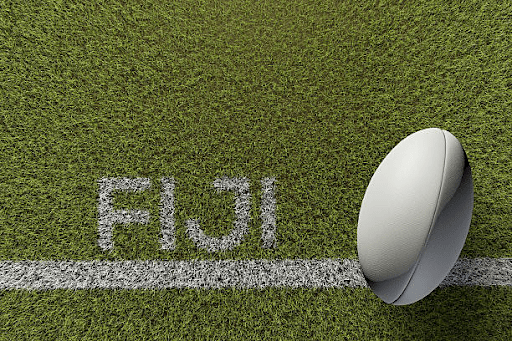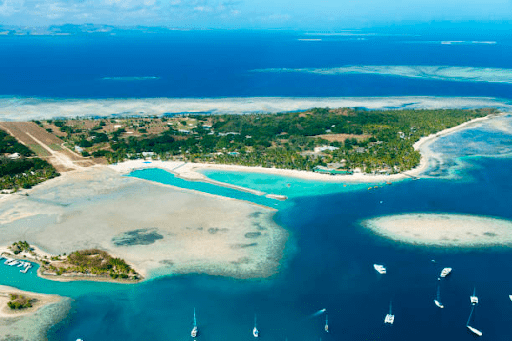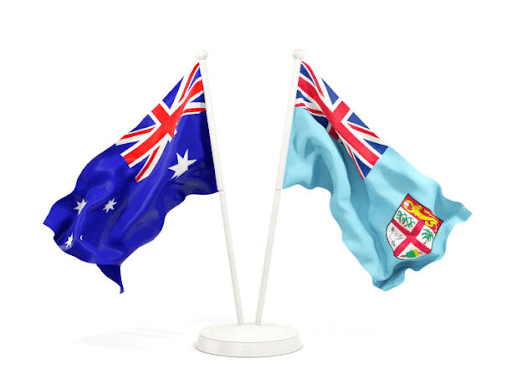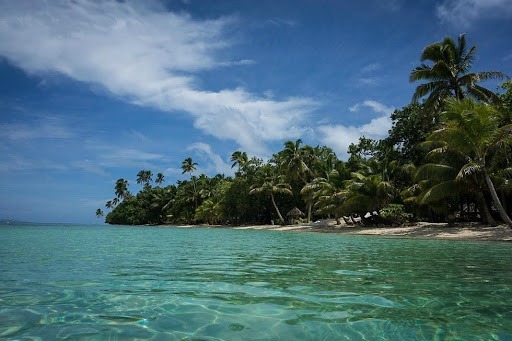The history of rugby in Fiji
Photo credit: Fiji Rugby
Fiji has one of the highest player-to-population ratios of all the rugby-playing nations.
Rugby is one of the most popular sports in Fiji. Some say they have one of the highest player-to-population ratios of all the rugby-playing nations, even more than New Zealand and only slightly less than Australia.
But this didn’t happen overnight.
The first time rugby was played in Fiji was in 1884 at Ba on Viti Levu Island, between the Europeans and Fiji soldiers. What would follow was many firsts.
Later in 1913, the European settlers founded a team for themselves. In December of the same year, the team played the All Blacks of New Zealand, who had been on tour. The two teams played a friendly game at Albert Park, the first representative match to be played on Fijian soil.
The All Blacks won 67-3. Fiji’s 3 points came from a try by PJ Sheehan, their captain and coach. A try is a way of scoring points in rugby by grounding the ball in the opposition’s in-goal area. At this point, the Fiji team comprised only Europeans.
History of rugby in Fiji
In 1914, the natives started to participate in rugby, and finally, in 1915, a Fiji Native Union was established.
The Fijians played their first overseas match in Apia, Samoa, in 1924. The pitch they used had a large tree at the halfway line. The match took place at 7 am so that the Samoans would have time to get to work afterwards.
Auckland University College visited the Fijian team in 1926, the first visit by an overseas team. In the same year, Tonga also visited Fiji. For the first time ever, the Fijian players dressed in their uniform of white jersey and black shorts, with a palm tree badge.
School-level competitions started in 1928, but it was only in 1939 that the Fiji Schools Union was established. All the games took place in the Suva-Nausori area because almost every suitable ground outside of Suva already had a cricket pitch.
When the New Zealand Maori team visited Fiji in 1938, the Fijians played in boots for the first time, although sometimes, they took their boots off during the match and threw them to the touchline.
In 1939, Fiji first toured New Zealand. Many of the Fijian players played barefooted to the cheers of the engaged crowd. It was history in the making as Fiji became the first team to tour New Zealand undefeated, winning seven games and drawing in one. Until today, this record remains unchallenged. In the final game, the Fijians beat the local Maoris 14-4 in Hamilton. The Waikato Times called it “the most brilliant exhibition of football seen in Hamilton for many years”. They went on to say that the team was “almost uncanny in handling the ball, lightning in the pace of their sprinting, relentless in their dive tackling, and all the time pursuing methods of bright, open football.”
The Native Rugby Union disbanded in 1945. By 1953, Fiji and Suva each had their own unions.
In 1963, the Fiji Rugby Football Union was renamed Fiji Rugby Union (FRU). Today, FRU is Fiji’s rugby governing body. They have 30,000 registered players under their banner, not including club or grassroots players. The first clubs to be established were Taipou, Tarirere, Hill, and Ofisa (Police) RFC.
FRU oversees 36 unions across 14 provinces. Viti Levu alone has 13 unions, Vanua Levu has five, and the outer islands house another 18. The unions conduct club competitions for their respective areas of responsibility. The total number of clubs in Fiji adds up to more than 600.
Fiji continued to hone its skills in rugby, always striving to become better.
The FRU president, Ratu Sir Penaia Ganilau, said in 1973, “There is room for a great deal of work in improving the grounds and other facilities. Administrating is a constant problem in many unions, and I would like to see more former players put their backs on the task. The standard of refereeing has fallen since Independence and clearly, the Union will need to pay special attention to this. Only a determined drive to eliminate weaknesses and build on strengths can confirm Fiji as a world power in rugby.”
Fijian rugby on the international stage in recent times
Photo credit: Fiji Rugby
The efforts have paid off.
Fiji is home to several international teams. Among them are the Rugby 15s teams (where there are 15 players on each side) Fijian Latui, and the Flying Fijians. Meanwhile, Fiji has two Rugby 7s teams (a team has 7 players): Fijian 7s and Fijiana 7s.
The Fijian national rugby team goes by the nickname Bati. They have been participating in the international rugby league since 1992. At the time of writing, Fiji is ranked 6th in the International Rugby League’s World Rankings.
The Fijian team has a long and colourful history in the World Cup. In 1987, Fiji reached the quarter-finals of the first World Cup but lost to France. The next world cup in 1991 was a disaster for Fiji. They lost all three pool games and came home in disgrace. The 1995 world cup was even worse, as they failed to qualify for the World Cup.
In 1999, Fiji lost to France in Toulouse in the World Cup. Abysmal refereeing was cited as the reason for the failure. During the 2003 World Cup in Australia, Fiji didn’t make the top eight after losing 22-20 to Scotland in the decider.
Nonetheless, for the Fijians, the only way is forward. They have reached the semi-finals of the Rugby League World Cup three times since, in 2008, 2013, and 2017.
Rugby in Fiji does not show any signs of slowing down. The Fijians continue to live and breathe rugby, yesterday, today, tomorrow, and for many years to come.












